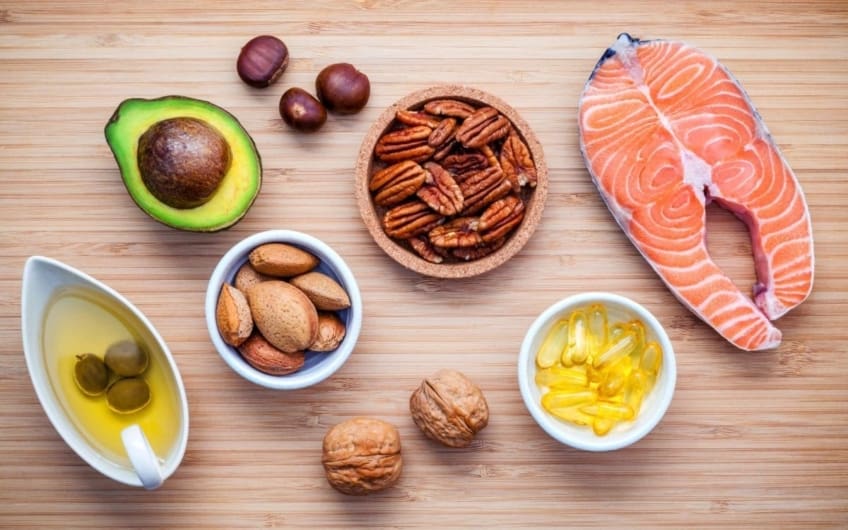
Certain fats should be part of your diet. But you should make sure you’re eating good fats instead of bad fats.
Your body uses fat for energy. It builds nerve tissue and hormones and controls inflammation. Good fats help your body absorb vitamins A, D, E, and K from the foods you eat. They provide health benefits and can lower your risk of disease.
Fats contain twice the calories of carbohydrates and protein. Consuming too much fat in your diet can lead to obesity. Fat calories also do not signal that your body is full after eating like other food groups. This can lead to overeating. Bad fats raise your total cholesterol and blood pressure. They can increase your risk of heart disease, diabetes, and some cancers.
Path to improved health
Everyone has different calorie needs. Your doctor can help you figure out how many daily calories you need. This will help tell you how many grams of fat you can consume. If you are overweight, the American Heart Association (AHA) recommends that you get less than 30% of your total daily calories from fat. This equates to 65 grams of fat for a 2,000-calorie diet.
“Bad” fats
Saturated and trans fats are bad for you. Less than 7% of your total daily calories should come from saturated fats. Less than 1% should come from trans fats. In a 2,000-calorie daily diet, that’s less than 15 grams of saturated fat and less than 2 grams of trans fat.
Saturated fats occur naturally in some animal products. This includes meat, poultry, eggs, and dairy items, such as cheese, cream, and whole milk. Palm, coconut, and other tropical oils, as well as cocoa butter, contain saturated fat.
Trans fats are made when liquid oils get turned into solid fats. This process is called hydrogenation. Trans fats are found in a lot of processed foods. All food companies have to list trans fats on nutrition fact labels. However, foods can have up to .5 grams of trans fat per serving and still show 0 grams. Check the ingredients list and look for the words “hydrogenated oil.”
You should limit saturated fats and avoid trans fats. They often are found in fast food, fried foods, and snack foods. They also can be in desserts and commercial baked goods. These bad fats increase your LDL (bad) cholesterol levels. They decrease your HDL (good) cholesterol levels.
“Good” fats
Replace bad fats with good fats. Studies show that good fats may help lower your total cholesterol level. Omega-3 fatty acids have good health benefits. They can decrease your risk of heart attack and inflammation.
Monounsaturated fats are found in canola, olive, and peanut oils. They are in a variety of nut oils and butters. Avocados, legumes (beans and peas), and seeds also contain these fats.
Polyunsaturated fats are found in vegetable oils like corn, sunflower, and safflower oil. They are in soybeans, legumes, grains, and nuts. Several seeds, like sesame and sunflower, also contain these fats.
Omega-3 fatty acids are usually found in seafood. This includes salmon, herring, sardines, and mackerel. Flaxseeds, flaxseed oil, and walnuts also contain omega-3s.
Things to consider
You don’t have to cut all fat out of your diet. However, you should limit the amount of fat you eat. There are 9 calories in each gram of fat. This is more than twice the calories in carbohydrates and proteins. They each have 4 calories per gram.
Try to eat foods that contain unsaturated fats and omega-3 fatty acids. Avoid foods that are high in saturated and trans fats.
Other tips include:
- Avoid fast food. It almost always contains trans fats.
- Avoid fried foods.
- Limit the amount of red meat you eat. Instead, eat fish, poultry, and vegetable proteins.
- Use canola oil when you are baking.
- Use olive oil when you are cooking. You also can use it in place of salad dressing and as a spread on bread.
- Make healthier snack choices. For example, eat a small handful of unsalted peanuts or edamame (soybeans) instead of potato chips.
- Try a serving of avocado on your sandwich or in your salad. Nuts and garbanzo beans also are good on salads.
- Use liquid or soft tub margarine instead of butter. Look for margarine that has low saturated fat and no trans fat.
Questions to ask your doctor
- What percentage of fats should I eat if I’m trying to lose weight?
- Should I take an omega-3 supplement to get more good fats?
Resources
![]()
Copyright © American Academy of Family Physicians
This information provides a general overview and may not apply to everyone. Talk to your family doctor to find out if this information applies to you and to get more information on this subject.







